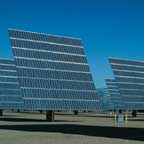
The lion’s share of tax incentives included in the recently enacted Energy Policy Act of 2005 goes to oil and gas companies, electric utilities, and alternative energy producers. However, savvy mid-sized companies and executives also can benefit from new tax credits and other incentives contained in the energy package.
The wide-ranging law, signed by President Bush in August, provides approximately $14.5 billion to stimulate energy production and encourage conservation. It also includes various regulatory reforms—from new reliability standards for the nation’s electricity grid to simplified licensing procedures. Here’s a look at how businesses and individuals can leverage the energy act to save tax dollars when making energy-efficient investments.
Business Incentives
Many energy act incentives target specific industries. For example, the act provides tax credits to homebuilders who construct energy-efficient homes and manufacturers who produce energy-saving appliances. Homebuilders may qualify for a $1,000 credit per house that reduces energy consumption 30 percent compared to a similar home without energy-saving improvements—or a $2,000 credit per home that uses 50 percent less energy. Appliance manufacturers may qualify for tax credits for producing certain energy-efficient dishwashers, clothes washers, and refrigerators.
A broad range of mid-sized businesses may be eligible for the following three tax incentives:
• Energy-efficient commercial property tax deduction. If you own commercial property, you may be eligible for a tax deduction for improving your building’s energy consumption. While the maximum deduction is $1.80 per square foot of the property, eligible deductions must meet several criteria. First, the improvements claimed for deduction must be depreciable or amortizable, installed in a building located in the U.S., and within the scope of acceptable building standards. Second, the improvements must be installed as part of an interior lighting system; a heating, cooling, ventilation, or hot water system; or the building envelope. Finally, the improvements must be installed as part of a plan to reduce annual energy and power costs by 50 percent or more. The deduction applies to improvements made in 2006 and 2007.
• Solar investment tax credit. The energy act triples the business investment credit for solar energy to 30 percent from 10 percent. The increased credit applies to equipment that uses solar energy to create electricity; to heat, cool, or provide hot water for a structure; or to provide solar process heat. It also covers equipment that uses solar energy to illuminate the inside of a structure using fiber-optic-distributed sunlight.
• Renewable energy tax credits. The energy act extends for two years the placed-in-service dates for wind facilities, geothermal facilities, small irrigation power facilities, landfill gas facilities, and trash combustion facilities. Refined coal and solar facilities no longer qualify for the renewable energy credit. Hydropower and Indian-owned coal facilities will become eligible for the renewable energy credit.
Individual Incentives
Individuals who invest in more energy-efficient homes and vehicles also will be able to trim their tax bills, thanks to the Energy Policy Act of 2005. Tax credits for energy-efficient investments include:
• Home improvements. Homeowners may qualify for a 10 percent tax credit for energy-efficient property improvements. These improvements may include new doors and windows, insulation, and heating and cooling systems. However, the total lifetime limit is $500, and the credit applies only for the 2006 and 2007 tax years. The credits are capped at $300 for central air conditioners, heat pumps, or water heaters; $200 for windows; and $150 for boilers or furnaces.
• Hot water and electricity. The new energy law provides a 30 percent tax credit for energy-efficient investments to heat water or generate electricity. The credits are limited to $2,000 for solar power. Solar energy systems that heat hot tubs and swimming pools aren’t eligible.
• “Green” vehicles. Starting in 2006, individuals who buy hybrid cars or vehicles that use fuel cells or certain other alternative power sources for non-business purposes may be eligible for fuel-economy credits of up to $1,600 and conservation credits of up to $1,000. Alternative-fuel vehicles may qualify for a credit of up to $4,000. This credit replaces a $2,000 tax deduction, which was scheduled to fall to $500 this year. Tax credits are worth more than deductions because the credit comes directly off the final tax bill.
Future Energy Policy
The Energy Policy Act seems to include something for every business and consumer. However, with energy prices escalating and influenced by mounting geopolitical and environmental pressures, U.S. energy policy has been criticized widely for avoiding some of the most important issues of the day.
The new law helps in some areas but “does little to tackle essential challenges such as petroleum conservation,” said Gregg Easterbrook, visiting fellow in economic studies at nonpartisan think tank The Brookings Institution. For example, he said, the policy lacks any provision to improve the fuel economy of cars, pickup trucks, and SUVs.
According to political observers, mid-sized businesses and others likely soon can count on lawmakers to revisit U.S. energy policy, including incentives for energy efficiencies. That’s because the American public, deeply divided on many issues, is united in thinking the U.S. is too dependent on foreign oil. According to a recent survey by Yale University, 92 percent of Americans said they’re worried about dependence on foreign oil. The survey also found the vast majority of Americans want to see government action to develop new, “clean” energy sources, including solar and wind power, as well as more fuel-efficient cars.
Whatever your views on energy policy, experts advise that you take advantage of the tax incentives included in the 2005 energy act. Many of those benefits are buried in fine print, so be sure you invest the time and resources to understand how to maximize tax savings for your business and yourself. IBI

